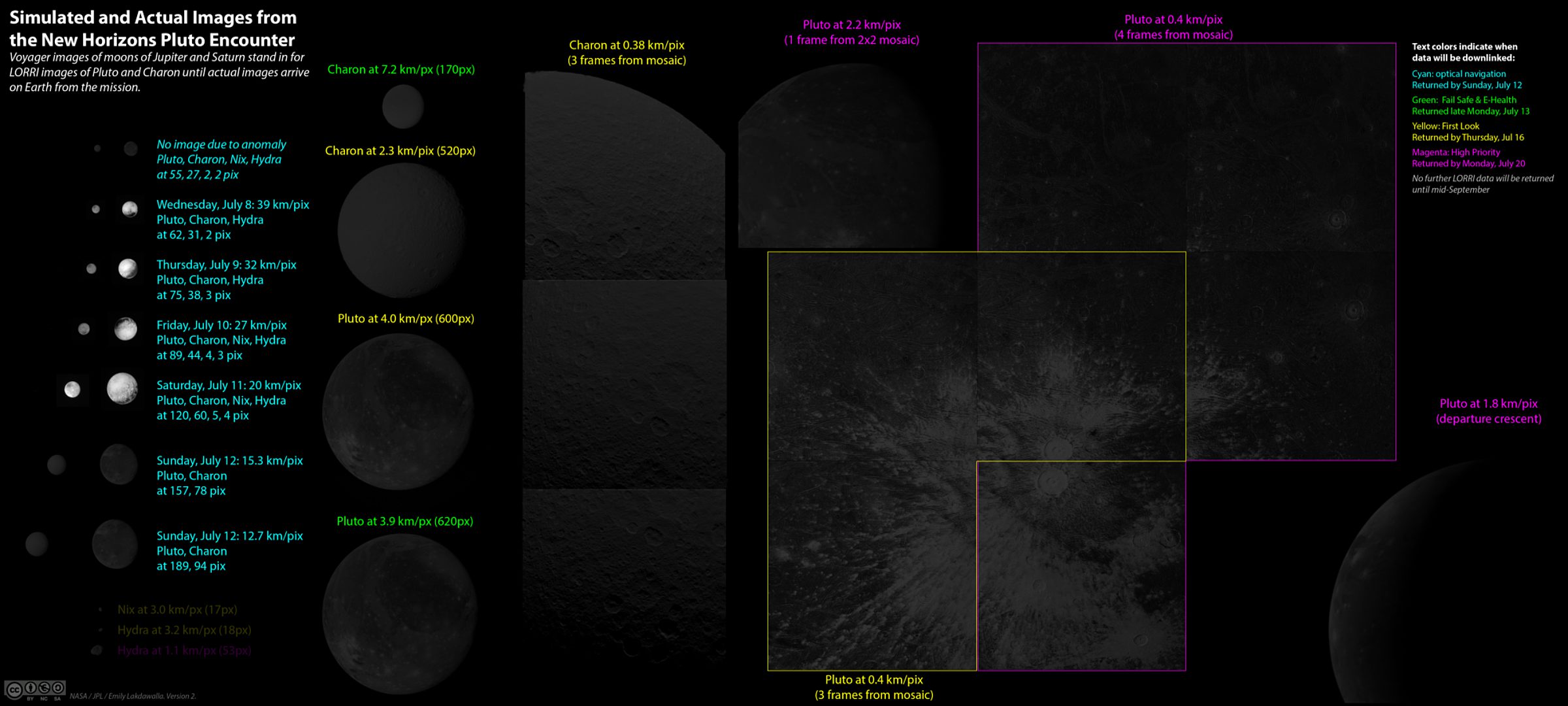Emily Lakdawalla • Jul 12, 2015
Zooming in to Pluto and Charon
In the span of a few days, Pluto and Charon have turned from spots into worlds. The latest images from New Horizons are showing Pluto and Charon to have unique faces, distinct from any other icy worlds in the solar system. Here are all the images of Pluto and Charon taken between July 7 and 11. I have stacked sets of images to do my best to bring out detail.
The Pluto images, in particular, hint at fascinating geology, with bright areas and dark areas and squiggles and patches.

There is color information, but it's quite old; there has been no new Ralph MVIC data downlinked to Earth since a data set from June 25, which is very low resolution. There would have been higher-resolution color data by now if not for the spacecraft anomaly. But they will have good color maps on the ground eventually.

The pictures are fascinating, but there's not quite enough detail to understand what is going on. Which makes it especially frustrating to know that this is the best view we will ever have of the hemisphere of Pluto that faces Charon.

This is the best view because Pluto and Charon both rotate very slowly, once in 6.4 days. The photo above was taken about 3 days out from closest approach. Pluto will slowly rotate this hemisphere out of New Horizons' view, and will show us its opposite side on Tuesday, when New Horizons makes its closest approach.
I am monitoring the new images at the New Horizons raw image website regularly. That task has been made easier with some help from a reader who put together a tool that assembles LORRI image metadata into a CSV; I'm using that metadata to build these browse pages that include all images along with useful metadata. I hope some of you find that useful, too!
Here's a look at my Voyager image simulation of the New Horizons data set, with these first encounter-phase images dropped in. I look forward to filling this card out with real data over the coming days.

This afternoon, I will report for Pluto encounter duty at the media center at the Applied Physics Laboratory. There is much more excitement to come!
Support our core enterprises
Your support powers our mission to explore worlds, find life, and defend Earth. You make all the difference when you make a gift. Give today!
Donate

 Explore Worlds
Explore Worlds Find Life
Find Life Defend Earth
Defend Earth


